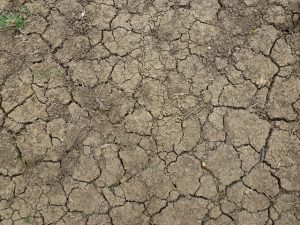
© Global Water Forum and licensed for reuse under this Creative Commons Licence
Drought can mean different things to different people. To farmers and agriculturalists, it may mean reduced crop yields, and in extreme cases potentially a loss of a harvest or of livestock. To the public it may mean that we need to stop using mains water in our gardens or to wash the car, we may also be asked to reduce our use of water and may experience a reduced mains water pressure. In the past under extreme conditions, droughts led to local cuts to public water supply. Droughts also effect the environment, leading to ecological stress and changes in the quality of our rivers and lakes.
Researchers have more formal definitions of types of drought. Droughts can be commonly conceptualised as being:
- Meteorological droughts
- Soil moisture or agricultural droughts
- Hydrological droughts and
- Socioeconomic drought.
In each case, droughts are a lack of water leading to unusually low levels of precipitation, soil moisture, river or groundwater levels or water for use by the public and industry. To find out more about how drought is defined and described see the following:
- Understanding the Drought Phenomenon – Wilhite & Glantz (1985)
- What is a drought? – Terry Marsh (2011)
The concept of drought propagation
Researchers have suggested that droughts start due to a deficit or shortage of precipitation that in turn leads to a reduction in the amount of moisture in the soil. At this stage of a drought crops and vegetation may start to be effected by drought. If the drought continues it will begin to lead to reduced water levels in rivers and aquifers and by this stage it may then start to impact on water supplies to the public. This concept of the progressive development of a drought is sometimes known as drought propagation.
Recently, a number of researchers have proposed that droughts are more complex than suggested by the simple drought propagation model, and that how we manage and use water may be an important factor in shaping the evolution and impact of episodes of drought. Some researchers have even suggested that human activities are systematically modifying droughts so that decisions related to land use, how we irrigate our crops, dam building and how and where we abstract water from the environment may affect the nature of future droughts.
You can read more about drought propagation and human impacts on droughts here:
- Hydrological drought explained – Van Loon (2015)
- A framework for a joint hydro-meteorological-social analysis of drought – Lange et al. (2017)
- Drought in the Anthropocene – Van Loon (2016)
